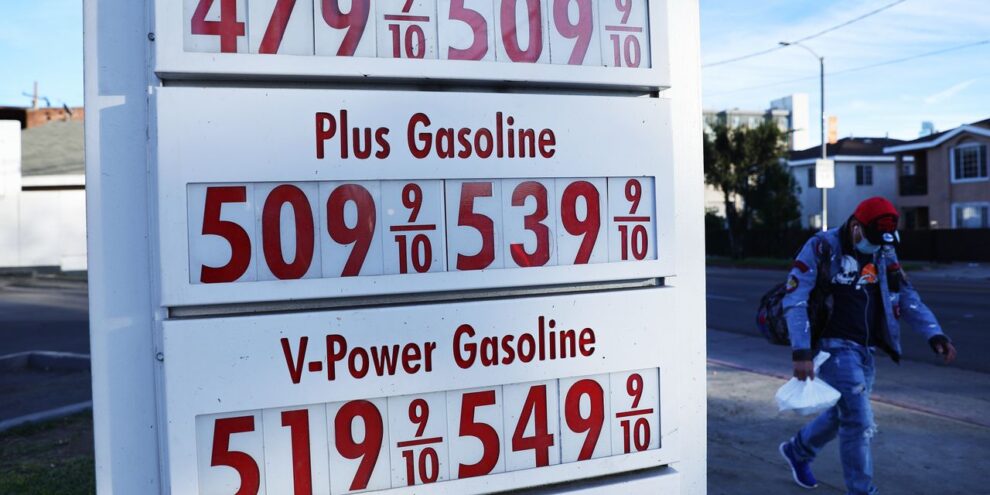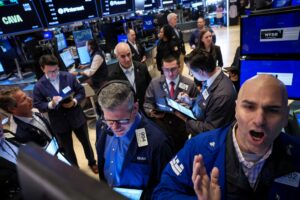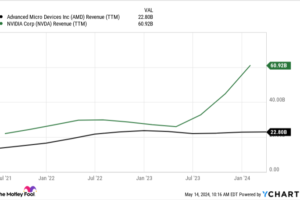
Fed funds futures traders are looking beyond the U.S. central bank’s March meeting and now see some likelihood that policy makers could deliver their first back-to-back, half percentage point rate hikes in almost 30 years by their May gathering.
Last week’s consumer-price report, which showed annual headline inflation soaring to a 40-year high of 7.5% in January, is behind the current thinking. On the day of that report, the market-implied chances of the Fed’s main policy rate target getting to between 1% and 1.25% by May, from a current level of 0% to 0.25%, soared to as high as 20%. That likelihood stood at almost 9% as of Wednesday after the release of the Fed’s January meeting minutes, though the percentage continued to fluctuate, according to the CME FedWatch Tool.
The prospect of the first back-to-back, half-point rate hikes from the Fed since 1994 remains an out-of-consensus call. However, it’s starting to take hold among rates strategists at BofA Securities, who wrote on Wednesday that “we see risks the Fed hikes 50bp in both Mar & May.” Though the “house view” of BofA’s economists is for two 25 basis point hikes in those months, its rates strategists pointed to a well-known monetary-policy formula known as the Taylor Rule, which suggests the fed funds rate target should already be at 6.2%.
“As rates strategists, we have to look at the balance of risks versus market pricing and we see risks that the market can price in a greater probability of a 50 basis point move in March and potentially 50 in May,” BofA’s Mark Cabana said via phone Wednesday. “The Fed has an inflation problem and it feels very logical that they will go as far as the market will allow them to.”
The minutes of the Fed’s January meeting show that most officials backed more rapid moves if inflation does not come down as expected. Recent comments by Federal Reserve Bank of St. Louis President James Bullard, a voting member of the rate-setting Federal Open Market Committee this year, also gave credence to the notion that rates could move aggressively higher. He told Bloomberg News last week that he’d support a full percentage point of hikes by July 1.
Treasury yields were mixed after the minutes were published on Wednesday, with one-year to three-year rates falling and longer-dated yields little changed to slightly higher.
BofA strategists currently see a risk that the widely followed spread between two-year TMUBMUSD02Y, 1.510% and 10-year Treasury yields TMUBMUSD10Y, 2.038% will invert, or fall below zero, sooner than expected this year, though “that won’t necessarily mean a recession is guaranteed, but one could be far into the future,”
Cabana said.
“The market has been conditioned to think that the Fed will be very slow, very gradual, and walking on eggshells around having to slow the economy or upset financial markets,” he told MarketWatch. “We believe this is a Fed that will, over the course of this year, realize it has to do more than the market anticipates in order to see inflation moderate.”
The Fed hasn’t delivered two consecutive half-point rate hikes since May-August 1994, when the annual CPI inflation rate was around 2.3% to 2.9%, substantially lower than it is now. Policy makers also delivered a 75 basis point hike in November of that year, when the inflation rate had yet to move above 3%.
As of Wednesday afternoon, fed funds futures reflected a 44% chance of a 50 basis point hike at the Fed’s March 15-16 meeting, and a 55% chance that the Fed’s policy rate target will be at least 0.75% to 1% or higher by the May 3-4 gathering. The fed funds rate target has not been between 1% and 1.25% since March 2020.
Sign up for our Market Watch Newsletters here
















Add Comment